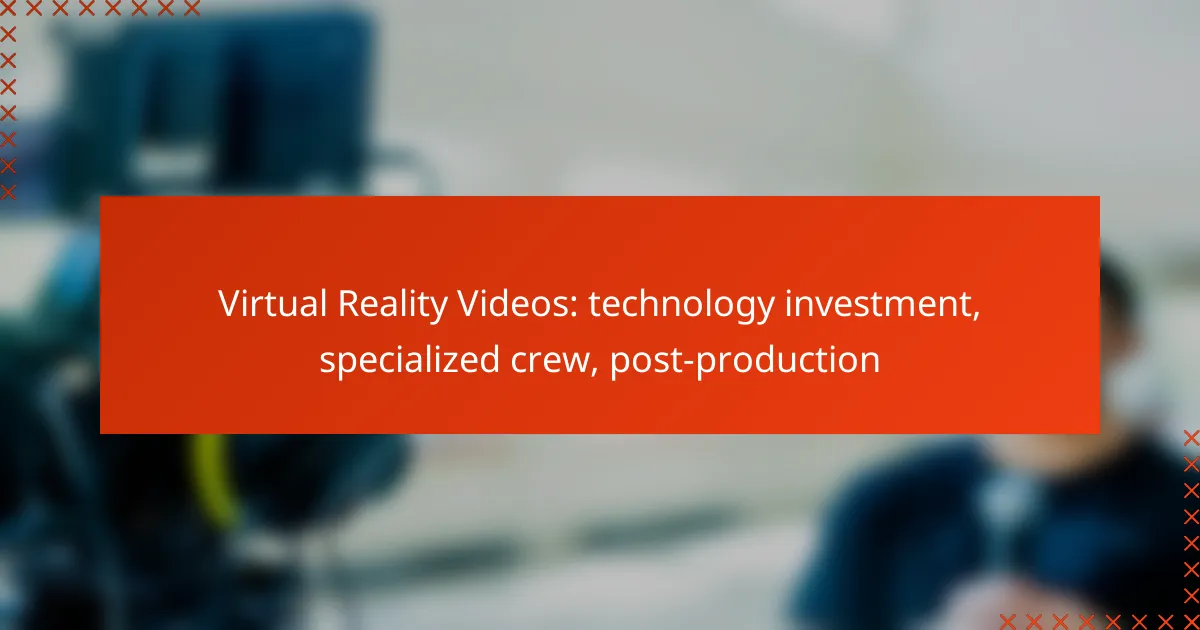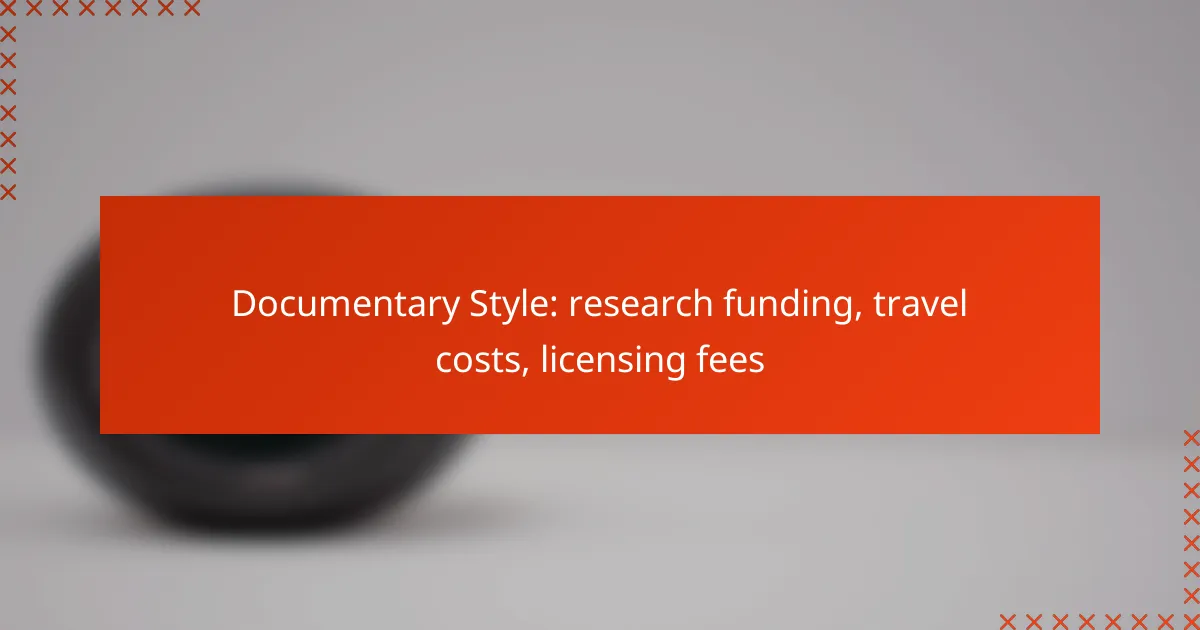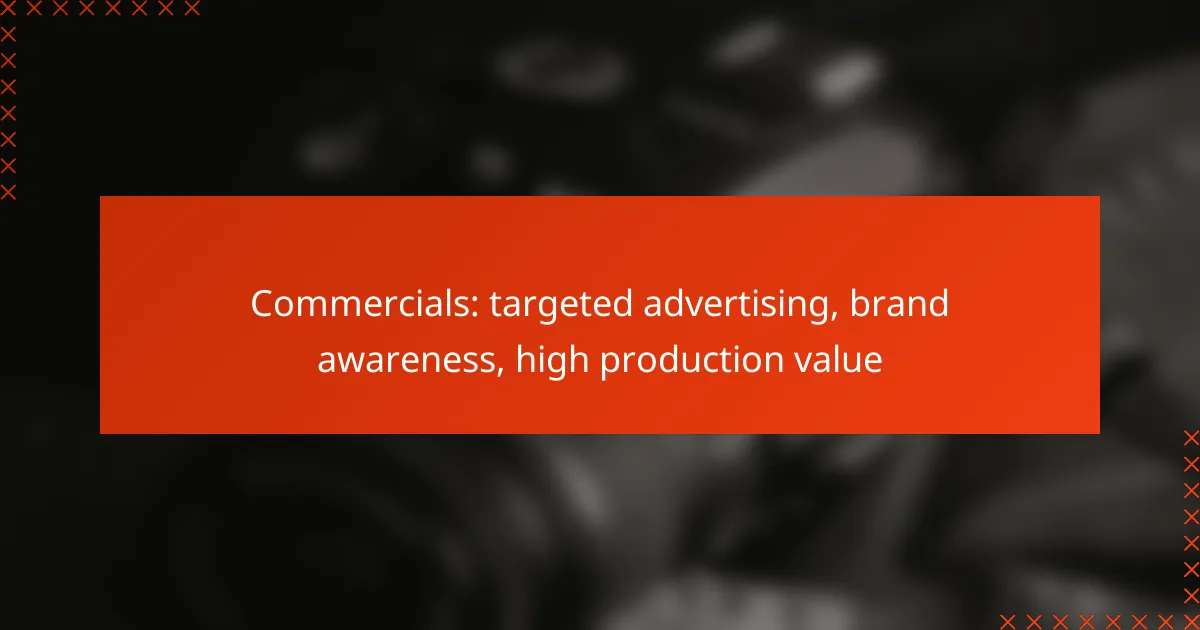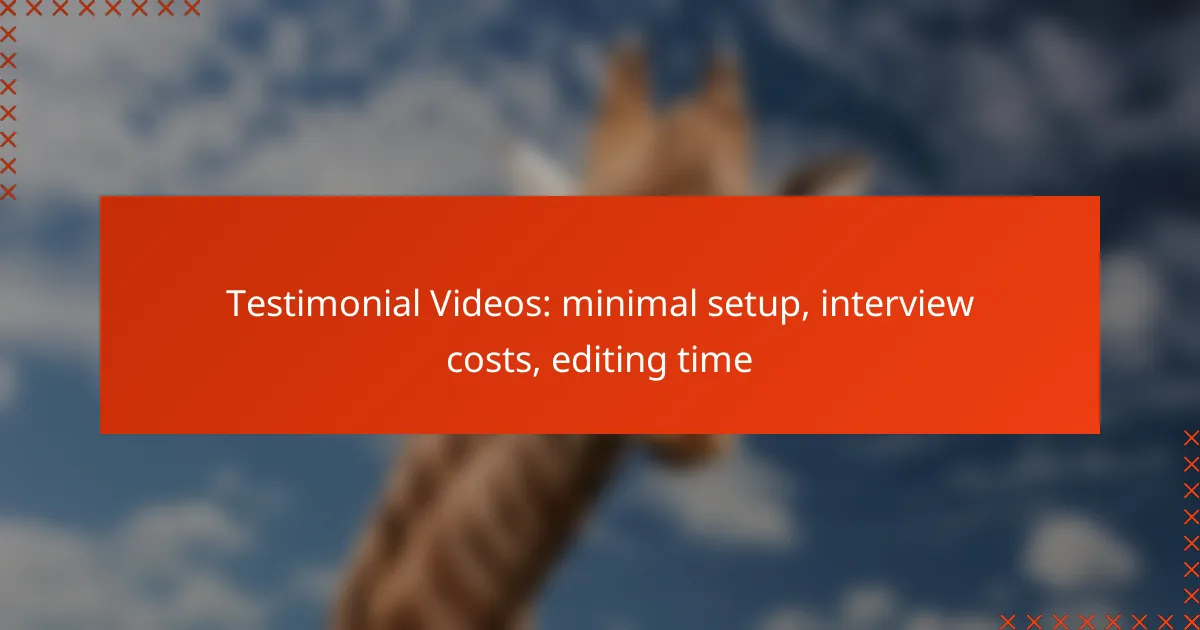Investing in virtual reality (VR) videos offers a transformative approach to engaging audiences, enhancing brand visibility, and improving educational experiences. To achieve high-quality results, it is essential to select a specialized crew with the right expertise and technical skills tailored for the unique challenges of VR production. Additionally, effective post-production processes, including editing, sound design, and quality assurance, are vital for delivering an immersive and polished final product.

What are the benefits of investing in virtual reality videos?
Investing in virtual reality (VR) videos can significantly enhance user experience, increase brand visibility, and improve educational outcomes. These benefits stem from the immersive nature of VR, which engages audiences in a unique way that traditional media cannot match.
Enhanced user engagement
Virtual reality videos create an immersive environment that captivates viewers, leading to higher levels of engagement. Users can interact with the content, making the experience more memorable compared to passive viewing. This interactivity can result in longer viewing times and increased retention of information.
To maximize engagement, consider incorporating interactive elements such as quizzes or decision-making scenarios within the VR experience. This not only keeps users invested but also encourages them to share their experiences with others, further amplifying reach.
Increased brand awareness
Investing in VR videos can elevate brand awareness by providing a unique storytelling platform that stands out in a crowded market. Brands that utilize VR can create compelling narratives that resonate with audiences, fostering a deeper emotional connection.
For effective brand promotion, ensure that the VR content aligns with your brand values and messaging. Collaborating with influencers or industry leaders in the VR space can also enhance visibility and credibility, reaching a broader audience.
Improved training and education
Virtual reality is transforming training and educational programs by offering realistic simulations that enhance learning outcomes. VR allows users to practice skills in a safe environment, making it particularly beneficial for fields like medicine, aviation, and manufacturing.
When implementing VR for training, focus on creating scenarios that mimic real-life challenges. This hands-on approach can lead to better skill retention and confidence among trainees. Additionally, consider the cost-effectiveness of VR training compared to traditional methods, as it can reduce the need for physical materials and travel expenses.

How to choose a specialized crew for virtual reality video production?
Selecting a specialized crew for virtual reality video production is crucial for achieving high-quality results. Focus on their experience, portfolio, and technical skills to ensure they can handle the unique challenges of VR content creation.
Experience with VR technology
When choosing a crew, prioritize those with substantial experience in VR technology. Look for professionals who have worked on various VR projects, as they will better understand the nuances of immersive storytelling and user interaction.
Consider their familiarity with different VR platforms and devices, as this can influence the production process. A crew well-versed in VR will be adept at troubleshooting common issues and optimizing the viewer experience.
Portfolio of past VR projects
A strong portfolio showcasing past VR projects is essential for evaluating a crew’s capabilities. Review their previous work to assess creativity, technical execution, and overall quality of the VR experiences they have produced.
Look for diversity in their portfolio, including different genres and styles, which indicates versatility. A crew that has tackled various themes will likely bring innovative ideas to your project.
Technical expertise in 360-degree filming
Technical expertise in 360-degree filming is a must for any VR production crew. Ensure they are skilled in using specialized cameras and equipment designed for capturing immersive content.
Inquire about their knowledge of post-production techniques specific to 360-degree video, such as stitching and editing. A crew proficient in these areas will be able to deliver polished, seamless VR experiences that engage viewers effectively.

What are the key components of post-production for VR videos?
The key components of post-production for VR videos include editing and stitching footage, sound design with spatial audio, and quality assurance testing. Each of these elements plays a crucial role in creating an immersive and polished final product that meets viewer expectations.
Editing and stitching footage
Editing and stitching footage involves combining multiple camera angles and perspectives to create a seamless 360-degree experience. This process requires specialized software that can handle VR formats, ensuring that transitions between scenes are smooth and visually coherent.
When editing, consider the pacing and flow of the narrative. Use cuts and transitions that enhance immersion, avoiding jarring shifts that could disrupt the viewer’s experience. A common pitfall is neglecting to account for viewer orientation; always ensure that the most important elements are in the viewer’s line of sight.
Sound design and spatial audio
Sound design for VR videos is essential for creating an immersive atmosphere. Spatial audio techniques allow sounds to be positioned in three-dimensional space, enhancing the realism of the virtual environment. This means that sounds should change based on the viewer’s perspective, mimicking real-world acoustics.
To achieve effective sound design, use high-quality audio recordings and consider layering different sound elements. Avoid overly loud or distracting sounds that can pull the viewer out of the experience. Implementing a balanced mix that complements the visuals is crucial for maintaining immersion.
Quality assurance and testing
Quality assurance and testing ensure that the final VR video meets technical and creative standards. This process includes checking for visual artifacts, sound synchronization, and overall user experience. Testing should involve multiple devices to confirm compatibility and performance across various VR headsets.
During testing, gather feedback from a diverse group of users to identify any potential issues. Pay attention to user comfort, as VR can induce motion sickness if not executed properly. A checklist for quality assurance might include visual clarity, audio quality, and user interface functionality to ensure a polished final product.

What are the costs associated with virtual reality video production?
The costs of virtual reality video production can vary significantly based on the project’s scope, technology used, and crew expertise. Key expenses typically include equipment and software, labor for specialized teams, and post-production editing fees.
Equipment and software expenses
Investing in high-quality equipment and software is crucial for producing immersive virtual reality videos. Costs can range from a few thousand to tens of thousands of dollars, depending on the complexity of the project. Essential items include 360-degree cameras, VR headsets, and powerful editing software.
For example, a basic setup might involve a mid-range 360 camera priced around $1,000, while professional-grade options can exceed $10,000. Additionally, software licenses for editing and rendering can add several hundred to several thousand dollars to the overall budget.
Labor costs for specialized crew
Hiring a skilled crew is essential for successful virtual reality video production. This often includes directors, camera operators, sound engineers, and post-production specialists. Labor costs can vary widely, typically ranging from $50 to $200 per hour based on experience and location.
For instance, a small team for a short project might cost around $5,000 to $20,000, while larger productions can exceed $100,000. It’s important to budget for both the crew’s time on set and the additional hours needed for planning and post-production work.
Post-production and editing fees
Post-production is a critical phase in virtual reality video production, involving editing, sound design, and visual effects. Fees for these services can range from a few hundred to several thousand dollars, depending on the project’s complexity and length.
For example, basic editing might cost around $1,000, while extensive visual effects or immersive sound design can push costs to $10,000 or more. It’s advisable to allocate sufficient budget for this stage to ensure a polished final product that meets industry standards.
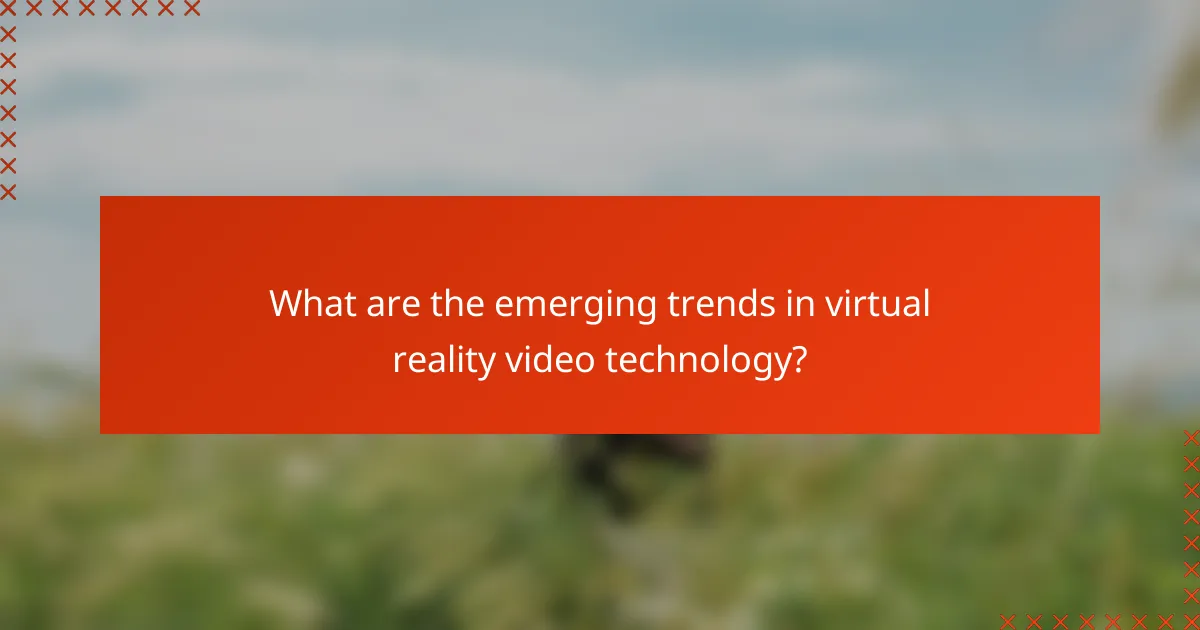
What are the emerging trends in virtual reality video technology?
Emerging trends in virtual reality (VR) video technology include significant advancements in hardware, the integration of artificial intelligence (AI) and machine learning, and increased accessibility for consumers. These trends are shaping the future of VR by enhancing user experience and expanding the market reach.
Advancements in VR hardware
Recent advancements in VR hardware have led to more immersive and realistic experiences. New headsets feature higher resolutions, improved field of view, and reduced latency, making the virtual environment feel more lifelike. For instance, devices now commonly offer resolutions exceeding 2000 x 2000 pixels per eye, enhancing visual clarity.
Additionally, advancements in motion tracking technology allow for more precise user movements within virtual spaces. This includes the use of external sensors and inside-out tracking systems that eliminate the need for external cameras, simplifying setup and increasing mobility.
Integration with AI and machine learning
The integration of AI and machine learning into VR video technology is transforming content creation and user interaction. AI algorithms can analyze user behavior to personalize experiences, making them more engaging. For example, AI can adapt the difficulty level of a game based on a player’s skill, creating a tailored experience.
Moreover, machine learning can enhance post-production processes by automating tasks such as video editing and scene recognition. This not only speeds up production times but also allows creators to focus on more creative aspects of their projects.
Increased accessibility for consumers
Increased accessibility in VR technology is making it more available to a broader audience. Prices for quality VR headsets have decreased, with options now available in the low hundreds of USD, making it feasible for many consumers. Additionally, platforms are offering subscription models that allow users to access a library of VR content without significant upfront investment.
Furthermore, advancements in mobile VR technology enable users to experience virtual reality without the need for high-end computers. This shift is opening up VR to casual users who may not have previously engaged with the technology, thus expanding the market significantly.
